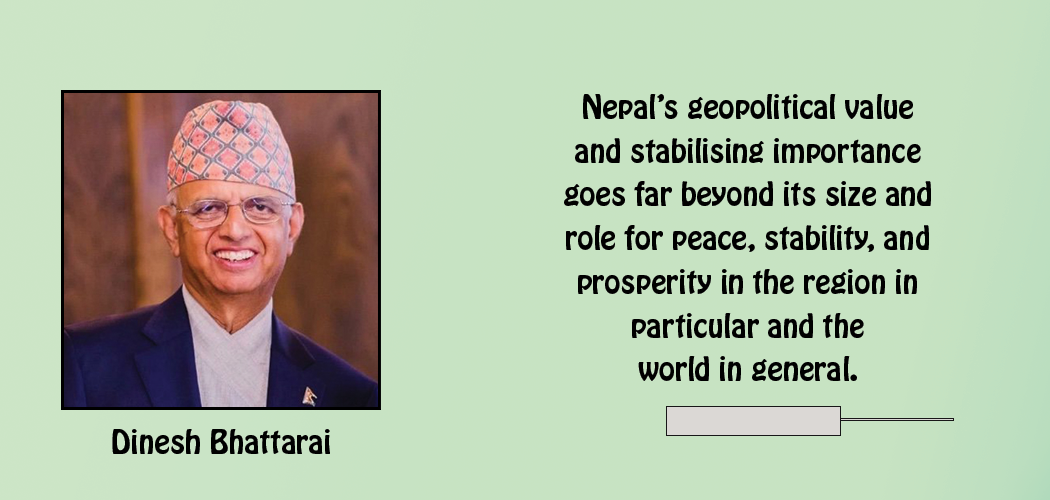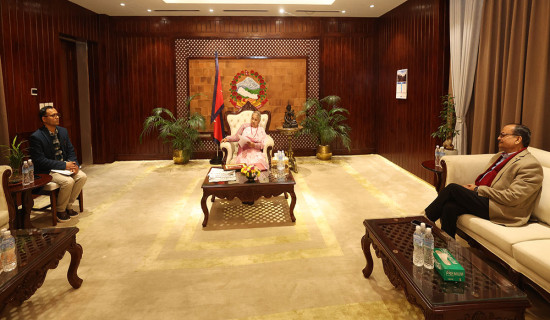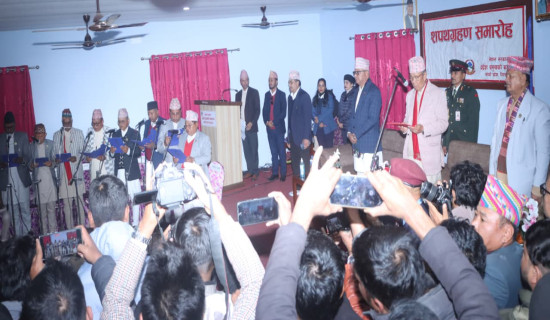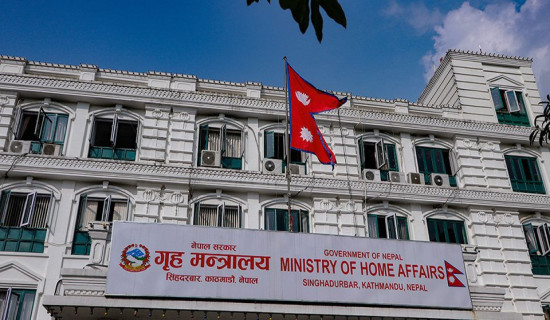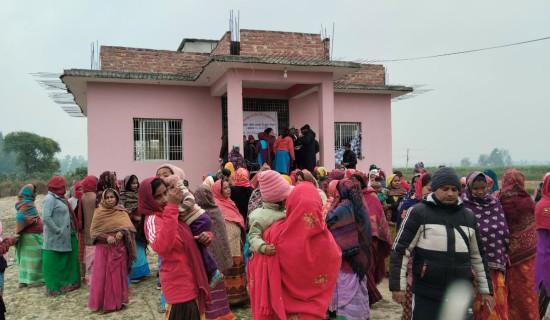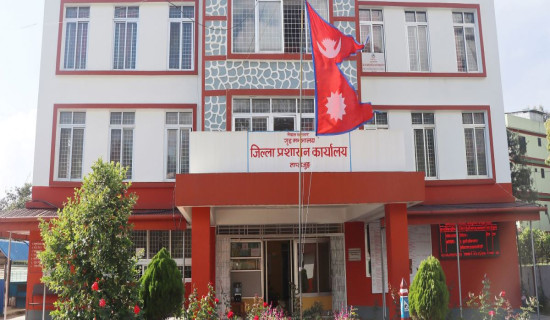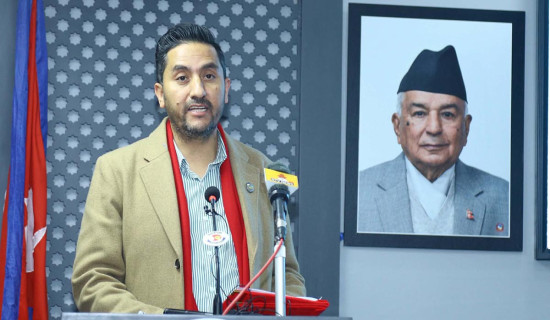- Wednesday, 7 January 2026
Nepal’s Nonalignment Relevant Forever
Nonalignment is firmly embedded in geophysical setting of Nepal. The roots of Nepal’s nonalignment go back to the teachings of the unifier of Nepal, King Prithvi Narayan Shah, who exhorted the posterity with a mantra that Nepal is “like a tarul (a root vegetable) between two stones.” This comes to constitute the kernel of its association with the incarnation of nonaligned movement (NAM) after the end of World War II. Located between two huge neighbours India and China - two most populous countries with two different political and social systems, now the centre of gravity of global geopolitics - “tarul between two stones” remains a ‘geopolitical code’ for Nepal.
Geography, history, and level of development provide a set of strategic assumptions how a country orients itself towards neighbouring and other states in shaping its foreign policy. They include in-depth analysis and evaluation of places/persons/events, multiple agendas and diversity of opinions that are far beyond national frontiers but are important in terms of their strategic importance and potential challenges and threats. The 1955 Bandung Conference codified the teachings of Gautam Buddha, the enlightened son of Nepal, in the form of Panchasheeel - five principles of peaceful co-existence. Panchasheel constitutes the core principles of the NAM for interstate relations.
Power shift
After the end of World War II, power centres shifted from London, Paris, and Berlin to Washington and Moscow. The world was divided into two poles - free world was led by the United States and the so-called Socialist pole by the Soviet Union. The bipolarisation was militarily manifested in the formations of the US-led North Atlantic Treaty Organisation (NATO) and the Soviet-led Warsaw Pact. The Cold War lasted from 1947 to 1989. In 1947, American diplomat George F. Kennan coined the word ‘containment’ as a strategic vision that would pursue a “long term, patient, but firm and vigilant containment” of the spread of the Soviet communism and expansive tendencies for four and half decades.
Given the first half of the 20th century that witnessed two devastating World Wars, second half passed through the Cold War that was characterised by intense hostility but without actual wars. There were no direct fights between the United States and the Soviet Union, with a remarkable absence of World War III. Countries that refused to align with either of the poles chose to remain nonaligned and neutral. NAM had to work in an inhospitable climate amidst a series of severe blows, widespread cynicism, twists, and turns. Nepal’s nonalignment record remains intact and unblemished. Nepal went to Bandung in 1955, attended the inaugural NAM summit in Belgrade in 1961, and has subsequently attended all NAM summits at the highest level.
NAM began with 25 members in 1961, more than 120 countries, and 20 observers are in its fold now. NAM consists of majority of UN members. No other groupings have as many members as the NAM. Their outreach is vast covering all continents and geographical regions. In its 61 years of journey, NAM has been able to carve out a place and has proved to be a major political force of contemporary history. It was effective in wiping out the colonialism, racism and apartheid. It has kept alive the several burning issues including disarmament and inequality in international relations. The former UN Secretary General Javier Perez de Cuellar listed NAM as “what have shaped the character of our age.”
The relevance of NAM could not be underestimated. Those who talk of NAM becoming irrelevant, often refer to the wider base of the Cold War which ended in 1990, and disintegration of the Soviet Union on December 26, 1991. If the Cold War was a transient factor, policy of nonalignment stands as the enduring factor in the conduct of international relations. Just as we say an alternative to the United Nations is a more effective and functioning United Nations, so is the case with the NAM. The success or failure of any multilateral/regional organisations depends on member states plus many other factors outside their control.
Russian invasion of Ukraine on February 24 has revived the relevance of nonalignment. It showed the growing number of countries in Asia, Africa and Latin America chose to judge, as Nepal’s Prime Minister BP Koirala had told the UN General Assembly in 1960, “every international issue on its merits without consideration of anybody’s fear or favour,” and stand in favour of justice. Those, who condemned the Russian invasion for its ‘unprovoked’ and ‘unjustified’ aggression against Ukraine in the UNGA votes, chose to stay away from seeking to expel Russia from the UN Human Rights Council. Nepal’s votes at the UN truly reflects its consistently held nonaligned position.
National space
Nonalignment does not mean indifference to the pressing issues of the day, it is not isolationism, neither it is anti nor pro anyone. Whether we call it strategic autonomy or independence of actions or decision making or judgements, the founding spirit of nonalignment seeks to securing national space free from strife and rivalry of great powers. It thinks military alliance or blocs, or great powers’ rivalry only exacerbate tensions and threatens peace, stability, and order. “Competitive coexistence” is what the growing interdependence and interconnected demands. If NAM can make itself more credible, cohesive, and effective, nonalignment will surely create a new fertile ground for new adherents
Nepal’s sensitive and fragile geostrategic location between two emerging global powers has attracted close attention of the global community. The geostrategic significance of Nepal is getting higher and higher as the Cold War 2 seems to be in the making. In fact, Cold War never ended for Nepal. Nepal should develop broad perspective, develop strategic culture and approach to navigate through the vicissitudes of the intensifying turbulence and volatility in larger geopolitical context. Nepal must have the clarity, understand the gravity of the issues, identify challenges and threats, and develop a definite sense of the national goals, values and interests and pursue them with consistency and vigour. There is no way Nepal can afford to deviate from the basic tenets of nonalignment. Nepal’s geopolitical value and stabilising importance goes far beyond its size and role for peace, stability, and prosperity in the region in particular and the world in general.
(Bhatttarai is a former Foreign Affairs Adviser to the Prime Minister.)

